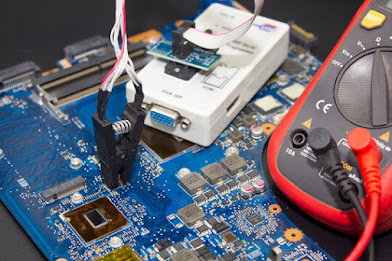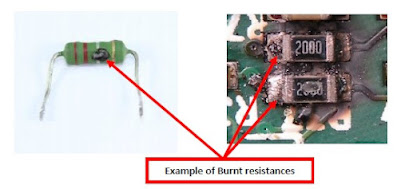Electronic Components types and functions and Test
- Storing and discharging the current according to the needs of the Electronic circuit
- The link between electronic circuits
- Smoothing the electrical current
1- Capacitance :
Capacitance is a way of saying how much energy the capacitor can hold at a given voltage. This value measured in pico-Farads (pF), nano-Farads (nF) or micro-Farads (μF) and is marked onto the body of the capacitor as numbers, letters or colored bands.
2- Voltage :
The Working Voltage is another important capacitor characteristic that defines the maximum continuous voltage either DC or AC that can be applied to the capacitor without failure during its working life.
3- Equivalent Series Resistance(ESR) :
The Equivalent Series Resistance or ESR, of a capacitor is the AC impedance of the capacitor when used at high frequencies and includes the resistance of the dielectric material, the DC resistance of the terminal leads, the DC resistance of the connections to the dielectric and the capacitor plate resistance all measured at a particular frequency and temperature.
Did You Know?
When you are wanting to replacing a capacitor, you must to use the same or higher capacitance rating and same or higher voltage rating or very close to it.
Non Polar Capacitor Symbol like SMD Ceramic Capacitors
Polar Capacitor Symbol like Electrolytic Capacitors
Capacitors are symbolized on mainboard with the letter C and sometimes symbolized with two letters like PC and sometimes does not have beside it any letters in some mainboard.
Some capacitors don’t have the value of capacity or voltage value written on them like ceramic capacitors.
Did You Know?
When SMD ceramic capacitor is damaged, you can replaced with another SMD ceramic capacitor by same size and will function without the any problem.
Polarized Capacitor Can only be connected to a circuit in one direction must be inserted in the proper orientation with respect to applied voltage. If a polarized capacitor was connected to a circuit incorrectly, at best it won’t work as intended. At worst, an incorrectly connected polarized capacitor will smoke, spark, and be one very dead part.
Non-Polarized Capacitor mean that they can be inserted into a circuit around either way.
Bar across one end of this tantalum capacitors provides the capacitor positive lead polarity
Non-polar capacitors like ceramic capacitors which have no specific orientation for installation on the motherboard we can install them in both directions
Ceramic capacitors
Capacitores NEC Proadlizer
Proadlizer capacitor is a group of capacitors grouped in one package and Manufacturer use this capacitor to reduce the cost of production and the area occupied by components in the motherboard design.


















Comments
Post a Comment